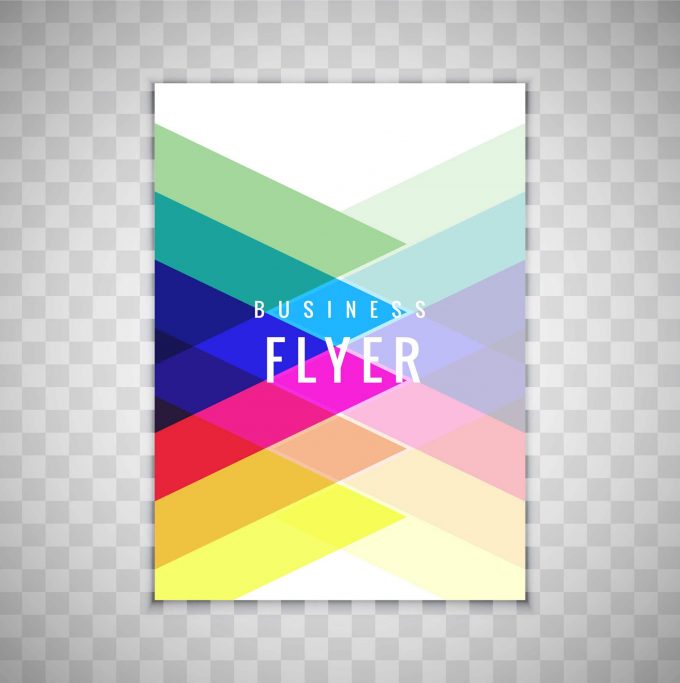Are you looking to create impactful flyers that capture the attention of your target audience? One of the key factors to consider when designing a flyer is the strategic use of colors. Colors have a profound impact on human psychology and can influence consumer behavior in powerful ways. In this article, we will explore the fascinating world of color psychology of flyer design and provide you with 10 valuable flyer tips to create compelling flyers that drive desired actions.
Understanding Color Psychology
Color psychology is the study of how colors affect human behavior and emotions. It explores the associations, symbolism, and cultural influences behind various colors. By leveraging this knowledge, you can strategically use colors in your flyer design to evoke desired emotions, create visual interest, and establish a connection with your target audience.
Tips for Color Psychology of Flyer Design
Choose Colors that Align with Your Brand Identity
When designing a flyer, it’s essential to use colors that are consistent with your brand identity. The colors you choose should reflect your brand’s personality and values. For example, if your brand is associated with eco-friendliness and sustainability, using shades of green can reinforce those qualities and create a sense of harmony.
Utilize Contrasting Colors for Visual Impact
Contrasting colors can create visual interest and help certain elements stand out in your flyer. By pairing complementary colors (colors opposite each other on the color wheel), you can create a dynamic and eye-catching design. For instance, using a combination of blue and orange can create a vibrant and attention-grabbing contrast.
Consider Cultural Associations and Symbolism
Colors can have different meanings and associations in various cultures. When designing a flyer for a global or diverse audience, it’s crucial to consider the cultural context and avoid any unintended negative connotations. For example, while white is associated with purity in Western cultures, it symbolizes mourning in some Eastern cultures.
Create Emotional Connections with Color
Colors have the power to evoke specific emotions and feelings. Warm colors like red, orange, and yellow can create a sense of excitement, while cool colors like blue and green can evoke calmness and tranquility. Choose colors that align with the emotional response you want to elicit from your target audience.
Use Color to Guide Attention
Colors can be used strategically to direct the viewer’s attention to specific elements of your flyer. By using vibrant or contrasting colors for key messages, calls to action, or important information, you can guide the reader’s eye and ensure they focus on the most critical aspects of your flyer.
Leverage Color Combinations for Balance and Harmony
Harmonious color combinations are visually appealing and create a sense of balance in your flyer design. Analogous colors (colors that are next to each other on the color wheel) create a harmonious and cohesive look. Experiment with different combinations to find the right balance that suits your flyer’s purpose and aesthetics.
Test and Optimize Color Choices
Not all colors will have the same impact on every audience. It’s essential to test different color variations to see which ones resonate most effectively with your target demographic. Conduct A/B testing or gather feedback to optimize your color choices and ensure they align with your campaign goals.
Use White Space Strategically
White space, also known as negative space, refers to the empty areas in your flyer design. It provides breathing room for the content and allows important elements to stand out. Utilize white space strategically to create visual clarity and prevent your flyer from appearing cluttered or overwhelming.
Incorporate Colorful Imagery and Graphics
In addition to using color in typography and design elements, incorporating colorful imagery and graphics can enhance the visual impact of your flyer. High-quality, vibrant visuals that align with your brand and message can capture attention and convey your intended meaning more effectively.
Print and Paper Selection for Enhanced Color Effects
When printing your flyers, consider the type of paper and printing techniques that can enhance the color effects. Different paper finishes and printing processes can influence how colors appear and the overall visual quality of your flyers. Consult with a professional printer to choose the best options for your desired outcomes.
Conclusion
Designing flyers that effectively influence consumer behavior requires a deep understanding of color psychology. By leveraging the power of colors, you can create visually captivating and emotionally engaging flyers that leave a lasting impression on your target audience. Remember to align your color choices with your brand identity, consider cultural associations, guide attention strategically, and optimize your designs through testing and feedback.


